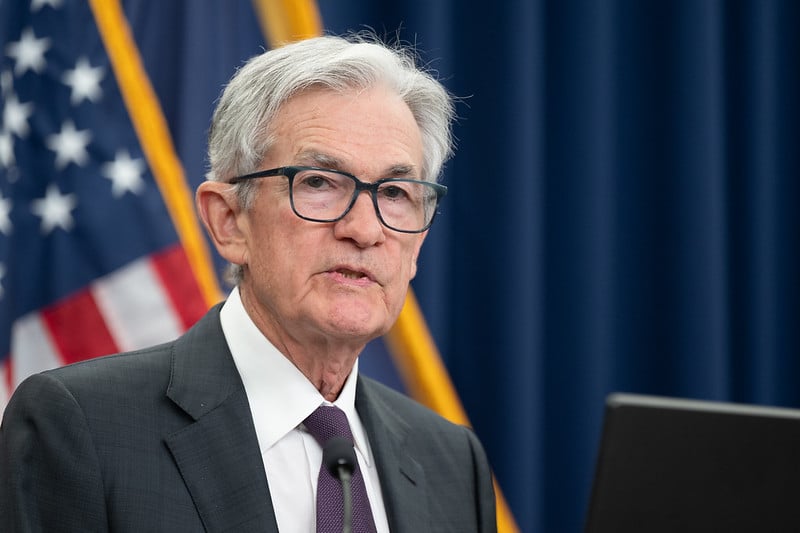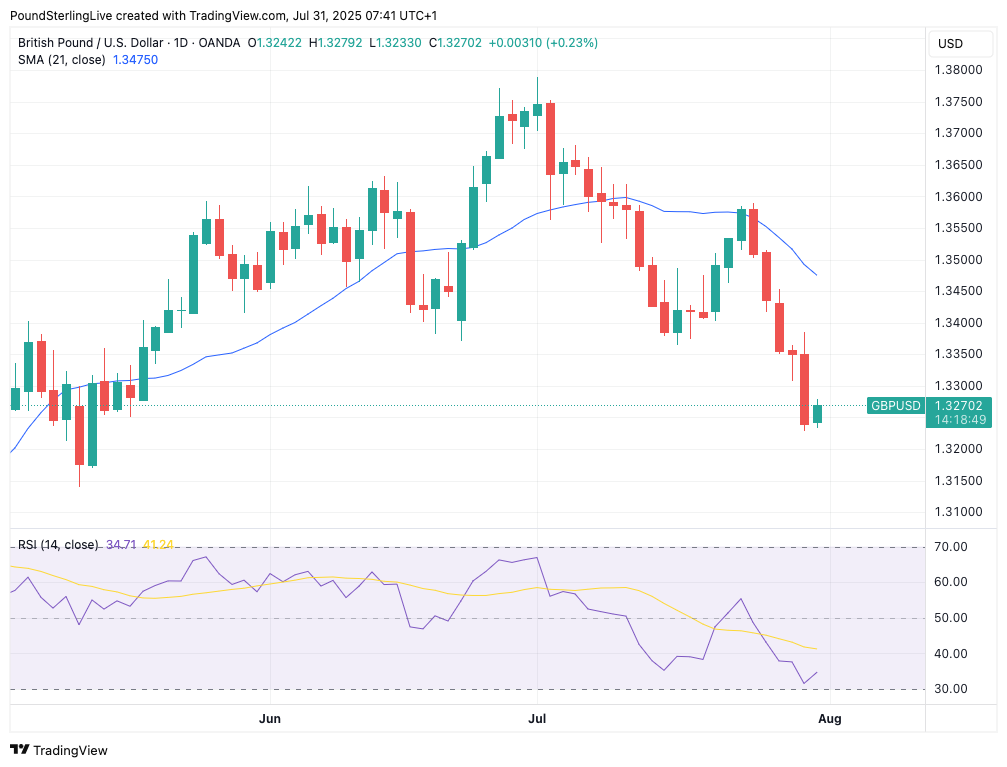
Image: Federal Reserve, public domain.
A strong U.S. GDP release and a coy Federal Reserve propel the Dollar higher.
Data out on Wednesday showed the U.S. economy grew 3.0% annualised in the second quarter, which beat consensus expectations and fortified a subsequent Federal Reserve decision to maintain interest rates at current levels.
The Federal Reserve kept interest rates unchanged for a fifth consecutive occasion, and offered scant indication that it would be inclined to cut interest rates in September.
If anything, the Fed was surprisingly forthright in its opposition to a cut, with Chair Jerome Powell surprising onlookers by saying, "you could argue we are a bit looking through goods inflation by not raising rates."
By bringing the topic of rate rises into the debate suggests it will take a decent undershoot in the next inflation data prints to push a September cut across the line.
Interest-rate futures showed traders pared back the probability of a September rate cut to about 40%, from around 60% prior to the decision.
This had the effect of pushing up U.S. bond yields and the Dollar.
"Higher yields and a solid US Q2 GDP print in turn left the dollar on course for its best week since 2022, cementing a July revival of the US exceptionalism story that had suffered in the first half of the year," says Peter Sidorov, an analyst at Deutsche Bank.
The Pound to Dollar exchange rate (GBP/USD) closed the day 0.80% lower at 1.3233, taking the weekly decline to 1.25%, its deepest since January. The Euro is bearing a bigger burden of the Dollar's recovery, falling a more substantial 1.28% midweek after Euro-Dollar ended the day at 1.14.
Note the RSI in the lower panel is now close to 30, a technical signal that it is close to oversold.
A decision to hold rates was always expected but there was a sense that the Fed would be more forthcoming in signposting a September interest rate cut.
"We'll be taking that information into consideration and all the other information we get as we make our decision at the September meeting," said Powell, refusing to commit to a cut.
The developments come amidst a broader realignment in favour of the Dollar: The U.S. has effectively completed a major trade realignment having sealed a 15% trade deal with South Korea on Wednesday, which was the final major deal the market was anticipating, drawing to a close a period of uncertainty that has hampered the U.S. economy and the Dollar.
To be sure, India appears to have missed out on the August 01 deadline to complete a deal, but the U.S. will almost certainly continue negotiations, creating scope for a deal in the coming weeks.
The question for the Dollar is how higher tariffs transalte into inflation and whether it negatively impacts domestic growth. The Fed will be asking whether the settling of trade uncertainty boosts the economy, and inflation, or do these relatively subdued tariff levels (relative to the April 02 levels) limit inflation, allowing the Fed to cut.
"We think it is too early for a Fed pivot. That said, trade deals with tariffs around 15% could limit the increase in inflation, and allow the Fed to deliver a rate cut in September. This would bode well for pro-growth and carry currencies, and take away a key USD support," says Dominic Schnider, Strategist at UBS Switzerland AG.
Powell said the Fed required more time to assess incoming inflation data with regard to the effect of tariffs. June's CPI data suggested some pass-through from importers to consumers was starting to occur, with economists saying there is more to come.
However, the Fed could yet still see the price rises as a one-off inflation injection, allowing it to resume rate cuts later in the year.
For the Dollar, the resumption of rate cuts would hamper advances, while any further delays on account of above-consensus inflation data would likely underpin the recent recovery and further pressure the Pound-Dollar.
For now, the market is swaying away from those cuts being necessary.

